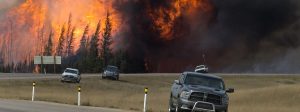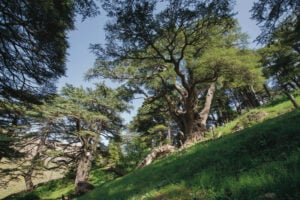In 2014, massive wildfires swept across the southern Northwest Territories, incinerating forests and destroying wildlife habitat across 5,000 square kilometres of landscape, forcing the closure of the Yellowknife Highway and polluting the air as far away as southern Saskatchewan and Manitoba. These events, which reflect a worldwide trend that’s seeing wildfires increasing in frequency and size, gave University of Alberta biologist Suzanne Tank and her colleagues an exceptional opportunity to start investigating some of the least understood consequences of northern wildfires: their effect on the ecosystems of streams and lakes.
“The water in aquatic environments is derived from the landscape,” says Tank, whose research is supported in part by Polar Knowledge Canada. “Precipitation runs off over the land into streams and lakes, carrying with it the characteristics of the landscape it’s flowing over.”
Fire changes soils, and burns away the layer of vegetation that insulates permafrost, the barrier of ice that keeps runoff water on the surface of the ground. With vegetation gone, permafrost thaws and runoff penetrates the ground, where it picks up material from deeper soils and carries it into streams.
Tank and her colleagues compared large burned areas to unburned areas, looking at the minute details of the water in the soils and the soil chemistry. They found the greatest changes — increases in nutrients and ions, changes in organic carbon and hydrology (how water flows across the landscape) — in areas that had been burned.







